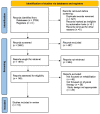Clinical and Biochemical Implications of Hyaluronic Acid in Musculoskeletal Rehabilitation: A Comprehensive Review
- PMID: 38138874
- PMCID: PMC10744407
- DOI: 10.3390/jpm13121647
Clinical and Biochemical Implications of Hyaluronic Acid in Musculoskeletal Rehabilitation: A Comprehensive Review
Abstract
Hyaluronic acid (HA) naturally occurs as a biopolymer in the human body, primarily in connective tissues like joints and skin. Functioning as a vital element of synovial fluid, it lubricates joints, facilitating fluid movement and diminishing bone friction to protect articular well-being. Its distinctive attributes encompass notable viscosity and water retention capacities, ensuring flexibility and absorbing shock during motion. Furthermore, HA has gained significant attention for its potential benefits in various medical applications, including rehabilitation. Ongoing research explores its properties and functions, especially its biomedical applications in several clinical trials, with a focus on its role in improving rehabilitation outcomes. But the clinical and biochemical implications of HA in musculoskeletal rehabilitation have yet to be fully explored. This review thoroughly investigates the properties and functions of HA while highlighting its biomedical applications in different clinical trials, with a special emphasis on its role in rehabilitation. The presented findings provide evidence that HA, as a natural substance, enhances the outcomes of musculoskeletal rehabilitation through its exceptional mechanical and biochemical effects.
Keywords: HA injection; active biomolecule; biomaterial; hyaluronic acid; physical therapy; rehabilitation.
Conflict of interest statement
The authors declare no conflict of interest.
Figures




References
-
- Gallo N., Nasser H., Salvatore L., Natali M.L., Campa L., Mahmoud M., Capobianco L., Madaghiele M. Hyaluronic acid for advanced therapies: Promises and challenges. Eur. Polym. J. 2019;117:134–147. doi: 10.1016/j.eurpolymj.2019.05.007. - DOI
Publication types
LinkOut - more resources
Full Text Sources

